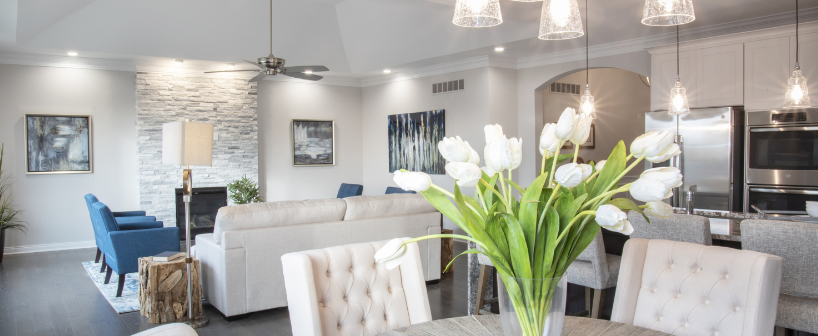When it comes to selling a home, first impressions matter. A vacant property can present a challenge in making that all-important positive impression on potential buyers. Empty rooms may look lifeless and uninviting, leaving buyers struggling to envision the full potential of the space. This is where vacant home staging comes into play. In this blog, we will delve into the world of vacant home staging, exploring its benefits, the process, and why it's an essential tool in the real estate industry.
The Power of First Impressions
Imagine walking into a house with bare floors, blank walls, and empty rooms. While some buyers may have a knack for visualizing potential, many struggle to see beyond the emptiness. The lack of furniture and decor can make the space feel cold and unattractive. This initial impression can be a deal-breaker for potential buyers.
On the other hand, when a home is professionally staged, it transforms into a warm, inviting, and aspirational living space. Staging creates an emotional connection with buyers, helping them see themselves living in the house. It sets the scene for them, making it easier to imagine their own furniture and personal touches in the space.
The Benefits of Vacant Home Staging
Maximizing Space: Professional home stagers know how to arrange furniture and decor to highlight the best features of each room. This can make spaces appear larger and more functional than they may seem when vacant.
Highlighting Potential: Staging helps buyers see the potential of the property. It allows them to understand how different rooms can be used and inspires ideas for their own interior design.
Creating a Lifestyle: Staging can also create a lifestyle narrative for potential buyers. For example, a well-staged living room can evoke feelings of relaxation and comfort, while a staged home office can inspire productivity.
Increased Buyer Interest: A staged home tends to generate more interest from potential buyers. Listings with high-quality photos of staged properties often receive more views and showings.
Faster Sales: Homes that are professionally staged tend to sell faster than vacant ones. This is a crucial advantage in a competitive real estate market.
Higher Sale Price: Staging can potentially increase the sale price of a property. When buyers perceive more value in a home, they may be willing to pay more for it.
The Vacant Home Staging Process
Professional vacant home staging involves several key steps:
Consultation: The process typically begins with a consultation between the homeowner or real estate agent and the home stager. During this meeting, goals, budget, and expectations are discussed.
Assessment: The stager assesses the property, taking note of its architectural features, layout, and target demographic. This assessment helps in planning the staging.
Design Planning: Based on the assessment, the stager creates a design plan. This includes selecting furniture, decor, and accessories that will enhance the property's appeal.
Furniture Rental: In most cases, vacant home staging involves renting furniture and decor items. Stagers have access to a wide range of furniture styles and can choose pieces that best fit the property.
Staging Execution: The stager then sets up the furniture and decor in the home. This includes arranging furniture, hanging artwork, and adding decorative elements.
Photography: After staging, professional photographs are taken to showcase the property online and in marketing materials.
Open Houses and Showings: The staged property is ready for open houses and showings. Potential buyers can now experience the property's full potential.
De-Staging: Once the property is sold, the staging items are removed, and the property is returned to its vacant state.
Why Vacant Home Staging is Essential
Vacant home staging has become an essential tool in the real estate industry for several reasons:
Competitive Advantage: In a competitive market, staged homes stand out and attract more potential buyers.
Online Presence: In the digital age, most homebuyers start their search online. High-quality photos of a staged property make a listing more appealing.
Emotional Connection: Staging creates an emotional connection with buyers, helping them envision their future in the home.
Higher ROI: While staging incurs some costs, the return on investment is often higher in terms of faster sales and potentially higher sale prices.
Professional Expertise: Home stagers are experts in interior design and understand what appeals to buyers. They have the skills to make a property look its best.
Conclusion
In the world of real estate, first impressions are everything. Vacant home staging has emerged as a powerful tool to create that all-important positive first impression. By transforming empty spaces into welcoming and aspirational living areas, staging helps buyers see the full potential of a property. It increases interest, speeds up sales, and can even lead to higher sale prices. So, if you're looking to sell your home or are a real estate professional, consider the benefits of vacant home staging to make your property truly shine in a competitive market.
